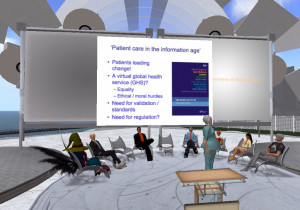
October 29th, 2015 by Elma Jane
What is Identity Theft?
Identity theft and identity fraud are terms used to refer to all types of crimes in which someone wrongfully obtains and uses another person’s personal data.
Basic categories of identity theft:
Account Takeover Fraud – is one of the two basic forms of financial identity theft, it occurs when a fraudster obtains and uses a victim’s personal information to take control of existing bank or credit card accounts and carries out unauthorized transactions right at a point of sale or access individual accounts online. Victims are often the first to detect account takeover when they discover charges on monthly statements they did not authorize or funds depleted from existing accounts.
Business or commercial identity theft – entails using a business’ name to obtain credit or even billing a business’ clients for products and services. Business identity theft can go on for years undetected.
Criminal identity theft – occurs when an imposter gives another person’s name and personal information such as drivers’ license, date of birth, or Social Security Number to a law enforcement officer during an investigation or upon arrest.
Identity cloning – some people use identity theft and identity cloning interchangeably, but definitely are not the same thing. True identity clones pretends to be you, they want to assume your identity. They want to become YOU.
Medical identity theft – occurs when someone steals your personal information (like name, Social Security Number or MediCare Number) to obtain medical care in your name. Medical identity theft can damage your credit rating.
New Account Fraud – means using another’s personal identifying information to obtain products and services. New credit card accounts is the most prevalent form of new account fraud. Because the thief is likely to use a different mailing address, the victim never sees the bill for the new account. When this type of fraud involves a credit card, once the new plastic is issued, the criminal turns it into cash very quickly. Victims may also be denied credit as a result of applying for loans.
Posted in Best Practices for Merchants Tagged with: bank, credit, credit card, data, fraud, medical, Medicare, point of sale, transactions
May 27th, 2014 by Elma Jane
The BACPAC Act, which establishes a site-neutral bundled payment model for Medicare post-acute care (PAC) introduced earlier this week. According to a press release from the Partnership for Quality Home Healthcare, the proposed payment structure would have PAC coordinators and their networks of post-acute care providers manage patient care through a 90-day, site-neutral bundled payment that would be initiated upon a patient’s discharge from the hospital.
CEO for The Partnership for Quality Home Healthcare, said in the company statement that the proposed legislation offers pro-patient solutions that are founded on years of research and analyses. Additionally, those solutions support a more effective and efficient delivery of quality post-acute care services.
As population ages, the need for well managed post-acute care will become a pressing necessity for the sustainability of our healthcare system. The BACPAC Act of 2014 represents positive Medicare reform that benefits patients, providers and taxpayer alike.
One of the major changes that the bill hopes to make is to reduce hospital readmissions. As the Partnership for Quality Home Healthcare explained, readmissions are a common cost-driver in PAC. However, the proposed legislation creates strong incentive for patients to be placed in the most clinically-appropriate, cost-effective setting. From there, it is more likely that patients would receive more efficient care through their treatment plan.
The bill stemmed from the BACPAC analysis that was proposed by the Alliance for Home Health Quality and Innovation in January. The analysis, compiled and explained the benefits of bundled payment options for post-acute care, as well as how providers can control costs. If implemented correctly, bundling payments for chronic care management, rehabilitative and other forms of post-acute care could lead to more efficiency across care settings and encourage care coordination among providers. In the current fee-for-service system, care coordination is often overlooked, resulting in unnecessary tests, procedures and costs to the Medicare program that often do not improve patient care or outcomes. Medicare could see up to $100 billion in savings over 10 years by moving patients into different settings and reducing spending by certain degrees.
Posted in Medical Healthcare Tagged with: Alliance for Home Health Quality and Innovation, bundled payment, bundled payment options, care providers, chronic care management, costs, healthcare, Home Healthcare, Medicare, Medicare program, Medicare reform, networks, patient care, patient’s discharge, patients, payment, post-acute care, post-acute care services, procedures, provider's, Quality Home Healthcare, taxpayer, tests, treatment plan

